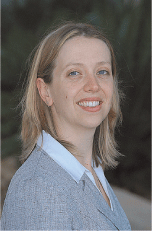An updated stratigraphic framework for the Georgina Basin, NT and Queensland
Tegan Smith A , Andrew P Kelman A , Robert Nicoll B , Dianne Edwards A , Lisa Hall A , John Laurie A and Lidena Carr AA Geoscience Australia.
B Australian National University.
The APPEA Journal 53(2) 487-487 https://doi.org/10.1071/AJ12098
Published: 2013
Abstract
The Georgina Basin is a Neoproterozoic to Lower Devonian sedimentary basin covering 325,000 km2 of western Queensland and the NT. It is a northwest-southeast-trending extensional basin, with prospective conventional and unconventional hydrocarbon targets in Cambrian and Ordovician carbonate and siliciclastic rock units. The unconventional gas and oil potential of the basin has led to recent exploration interest, although the basin has been relatively less explored in the past.
At the southern end of the basin, depocentres contain up to 2.2 km of Cambrian to Devonian sedimentary rocks, overlying Neoproterozoic sedimentary rocks more than 1.5 km thick. The basin succession thins toward the north, where Cambrian sediments overlie the McArthur Basin sediments in the Beetaloo Sub-basin. Biostratigraphic interpretations of the prospective southern, central and eastern regions of the basin have been revised to reflect the 2012 Geological Time Scale (Gradstein, Ogg, Schmitz, and Ogg, 2012), resulting in an updated chronostratigraphic framework for the basin.
The revised biostratigraphic interpretations have implications for important hydrocarbon source rocks. For example, the limestone unit in the southern parts of the basin, generally regarded as the Thorntonia Limestone, is of a different age to the type section for this unit, located in the Undilla Sub-basin. Additionally, the basal hot shale of the Arthur Creek Formation is diachronous across the Dulcie and Toko synclines, which may have ramifications for hydrocarbon exploration.
This revised chronostratigraphic framework (by Geoscience Australia) for the Georgina Basin provides a baseline for the first basin-wide assessment of the unconventional hydrocarbon potential of the basin.

Tegan Smith is a biostratigrapher in the basin resources group at Geoscience Australia. She completed a BSc (Earth science and zoology) at the University of Tasmania then joined ANU for her honours year. In 2007, she undertook a PhD at ANU then joined Geoscience Australia in 2011. She started her present position with the Basin Resources Group in early 2012. |

Andrew Kelman is a biostratigrapher with the Basin Resources Group in the energy division at Geoscience Australia. He completed a BSc at ANU in 1993 and an honours degree (palaeontology and ecostratigraphy) at Macquarie University, Australia, in 2005. He joined Geoscience Australia as a palaeontology technician in 1994, moving to his present position with the Timescales project in 2006. His present work is focused on biostratigraphic contributions to the acreage release process and compiling biostratigraphic charts covering the Australian offshore and onshore basins. |

Robert (Bob) Nicoll was educated in the US and obtained his PhD from the University of Iowa in 1971. He worked for the Bureau of Mineral Resources/Australian Geological Survey Organisation for 28 years and is a school visitor in the Research School of Earth Sciences at ANU. He was contracted to Geoscience Australia developing the Australian datapack for Time Scale Creator and to work with high precision dating of zircons, using CA-IDTIMS, in tuff beds of the Middle Permian to Early Triassic in eastern Australian Basins. His principal research interest involves all aspects of conodont biostratigraphy and palaeobiology from the Cambrian to the Triassic. He is continuing the CA-IDTIMS studies, especially in the Sydney, Gunnedah and Bowen basins. |

Dianne Edwards is a senior petroleum geochemist at Geoscience Australia and is presently involved with the offshore acreage release and petroleum prospectivity products and promotions group. Her scientific focus is on the resource assessment of undiscovered unconventional hydrocarbons in Australia’s onshore basins as part of the onshore hydrocarbons project. She is undertaking organic geochemical studies about oils, gases and source rocks of the Georgina Basin. She is also undertaking hydrocarbon migration studies in the Gippsland Basin as a member of the CCS Gippsland Project. She has extensive experience on the petroleum systems of the North West Shelf, Canning, and Otway basins. She received her BSc (hons) (geology) and MSc (organic petrology and organic geochemistry) from the University of Newcastle-upon-Tyne, UK. She was awarded a PhD from the University of Adelaide. Member: PESA and the European Association of Organic Geochemists. |

Lisa is a research scientist at Geoscience Australia’s energy division. Her present research is focused on unconventional hydrocarbon resource assessments and petroleum systems modelling in various Australian basins. She holds an MSc (geology and geophysics) from Cambridge University (1999) and a PhD (structural geology and neotectonics) from Oxford University (2003). |

John Laurie is a senior research scientist in Geoscience Australia and has a BSc (Hons 1) in geology from the University of Newcastle and a PhD in palaeontology from the University of Tasmania. After a brief period as a regional mapper in the Northern Territory Geological Survey in Alice Springs, he joined BMR (now Geoscience Australia) in 1982 as a palaeontologist in the Timescales project. He has published over 80 research papers and has been co-author of two volumes of the Treatise on Invertebrate Paleontology. John is also editor-in-chief of the Memoirs of the Association of Australasian Palaeontologists. |

Lidena Carr is a geologist in the basin resources group in the energy division at Geoscience Australia. In 2004, she graduated from ANU with a BA/BSc (geology and human ecology) (hons) and then began work as a technical officer at the Research School of Earth Sciences, ANU. She joined Geoscience Australia in 2007 where she has held numerous positions; she is now working in the unconventional hydrocarbons section. |
References
Ambrose, G.J., Kruse, P.D., and Putnam, P.E. (2001). Geology and hydrocarbon potential of the southern Georgina Basin, Australia. The APPEA Journal 41, 139–63.Dunster, J.N., Kruse, P.D., Duffett, M.L., and Ambrose, G.J., 2007—Geology and resource potential of the southern Georgina Basin. Northern Territory Geological Survey. Digital Information Package DIP007.
Gradstein, F.M., Ogg, J.G., Schmitz, M.D., and Ogg, G.M., 2012—The Geologic Time Scale 2012, Volumes 1 & 2. Oxford, UK: Elsevier BV.
Laurie, J. R., 2012—Biostratigraphy of the Arthur Creek Formation and Thorntonia Limestone, Georgina Basin. In Ambrose, G.J., and Scott, J. (editors), Proceedings of the Central Australian Basins Symposium, Alice Springs, Northern Territory, 16–17 July 2012, Northern Territory Geological Survey, CD ROM.
Öpik, A.A., Pritchard P.W., 1960—Cambrian and Ordovician. In Hill, D., and Denmead, A. K. (editors), The Geology of Queensland. Journal of the Geological Society of Australia, 7, 89–109.
Öpik, A.A., 1979—Middle Cambrian agnostids, Systematics and biostratigraphy. BMR Bulletin. 172 (1), 1–188.
Walter, M.R., Shergold, J.H., Muir, M.D., and Kruse, P.D. (1979). Early Cambrian and latest Proterozoic stratigraphy, Desert Syncline, southern Georgina Basin. Journal of the Geological Society of Australia 26, 305–12.


